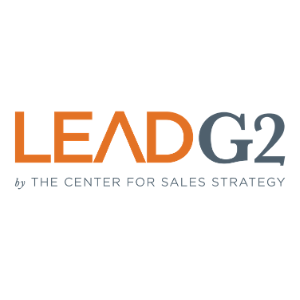Two Maxims That Are Limiting Your Marketing Success
There is overwhelming evidence that traditional outbound methods of prospecting and marketing are becoming less and less effective. 57% of the...
5 min read
 LeadG2
:
August 25, 2022
LeadG2
:
August 25, 2022


As any savvy marketer will know, marketing strategies have to be based on data and facts in order to be effective. While some decision-makers might want to move on to the next new shiny marketing idea that captures their attention, in the B2B space, it pays to know what will and won’t work, especially if your marketing dollars are on the line.
These 14 facts about B2B marketing are what we know to be true through data and experience.
More power is shifting into the buyer’s hands. At this point, your sales team can fight it, or they can embrace it and reap more closed deals as a result. In turn, however, this also means that B2B prospects might take even longer to move forward with you.
Add in the fact that B2B purchases typically go through more layers of decision-makers than the typical B2C prospect, and that can make the process even longer.
In the process of doing their own research to make a purchasing decision, B2B buyers will typically search online and on social platforms for solutions.
It pays to know where they’re doing their research, however. For example, if you’ve done the research and know most of your prospects look for solutions on Facebook, then it pays to focus not only on your website but on providing information about your products on Facebook also.
If you were looking for a sign that you need to put more focus on content marketing and an inbound strategy, this is it. According to Demand Gen Report, most buyers consume between 3-5 pieces of content before making a purchasing decision. That’s an increase from recent years and one we’re not surprised about, considering the sheer number of businesses vying for your customer’s attention.
To answer this need for information, develop content that’s concise, research-driven, and allows them to come to their own conclusions about your product. This will further establish your brand’s credibility and subject matter expertise in their eyes.
Here’s where getting reviews from your customers come in handy. In the process of searching for solutions, business owners are going to look for testimonials before they commit to giving you their money and time.
Don’t just focus on adding positive reviews to your website, either. Your prospects are going to search for outside reviews on Google in order to get an unbiased consensus of what it’s like to work with you, so it’s critical to ask your satisfied customers to rate you highly on that platform.
This goes back to the power and decision-making capabilities shifting into the buyer’s hands. You might not even know your buyer exists, but they’re on your website, researching your products and seeing if you have any content that can give them answers.
Provide that information to them. Gate it behind a form, and give them just enough information, so they know it’s worth giving you their email address in exchange for seeing it. That way, your sales process can start before your salesperson ever picks up the phone.
Ads are great for getting your lead’s attention early in the process and planting the seeds of brand recognition. But, getting their attention only goes so far. Articles bridge that gap, so you’re providing detailed information to prospects that guide them toward their decision.
Blog posts are great for this. Aside from being able to establish yourself as a thought leader by weighing in on your industry, you can also add articles to the mix that discuss your products and services at length and demonstrate how they address your prospect’s problems.
This became particularly true during the COVID-19 pandemic in 2020, when in-person meetings became a health risk. While the rate of online customer conversions has steadily risen over the last five years, the pandemic caused that rate to surge. Now, roughly 65% of B2B companies are fully transacting online, regardless of industry.
Kids these days.
Neither of the younger generations take kindly to ads. In an age where personal information is sold, collected, and used, they tend to be suspicious of companies that send targeted ads.
However, there is some limitation to their distrust. Gen Zers and millennials are more receptive to personalized ads when it comes from brands that already have their loyalty.
This might be true depending on your industry and target audience—especially if you’re marketing to older consumers. However, B2B advertising is a different beast that increasingly requires a more surgical approach than these traditional marketing channels can offer.
Like, a lot.
By some measures, inbound marketing reduces your cost per lead by at least 60%. This isn’t new information, either—we’ve known for years how inbound marketing costs less per acquisition than traditional outbound, typically by leaps and bounds.
With that in mind, keeping your website optimized for inbound with gated content and regularly maintained pays dividends in the new leads you’ll acquire.
The most successful B2B inbound and content marketers have these four factors in common:
They document their inbound marketing strategy
They establish and follow their editorial mission statements
They meet with their content teams frequently
And they have organization-wide clarity on what content marketing success actually looks like
Marketing with a sense of purpose is a ticket to success. Not only does it allow your team to stay focused on what really matters; it also prevents distraction any time a shiny new social media platform or other trendy tactic comes along, and allows you to fold those tactics into the strategy if it turns out they’ll be helpful.
But, some marketing tactics remain effective for your long-term strategy. In-person events like trade shows used to be top dog five years ago. Since then, a lot about the world has changed.
However, digital content continues to hold sway in B2B marketing. Whitepapers and case studies are still excellent ways to establish thought leadership and prove value to prospects. Webinars and video content are the future because they provide information in a digestible medium that can be revisited repeatedly or presented more easily to internal stakeholders.
Not including video ads, consumers prefer to be educated through video over reading articles about them.
However, if you want to reap the rewards of good on-page SEO, it pays to have some text along with your video. This is why we love providing transcripts along with any video content—that way, search engines can see that you use video, but you’ll also have keywords on the page that help them find you in the first place.
Search engine marketing and paid social ads to remain the most effective paid marketing tactic to reach your B2B prospects. However, the trick to keeping these methods successful is to make sure your ads are targeting the right prospects. Google Ads, LinkedIn ads, and Meta for Business allow advertisers to get granular with their target audience features, so use these to your advantage to target your specific industry, location, and other features.
The data we use to track the efficacy of our B2B marketing strategies is ever-changing. But, it also helps us see how the B2B buyer’s journey continues to evolve over time. Review the numbers regularly and act accordingly.
*Editor's Note: This blog has been updated since its original publishing.

There is overwhelming evidence that traditional outbound methods of prospecting and marketing are becoming less and less effective. 57% of the...

Content is powerful. In fact, if you’re looking to top the marketing charts (aka ranking high on Google or having great SEO), 61% of marketers say...